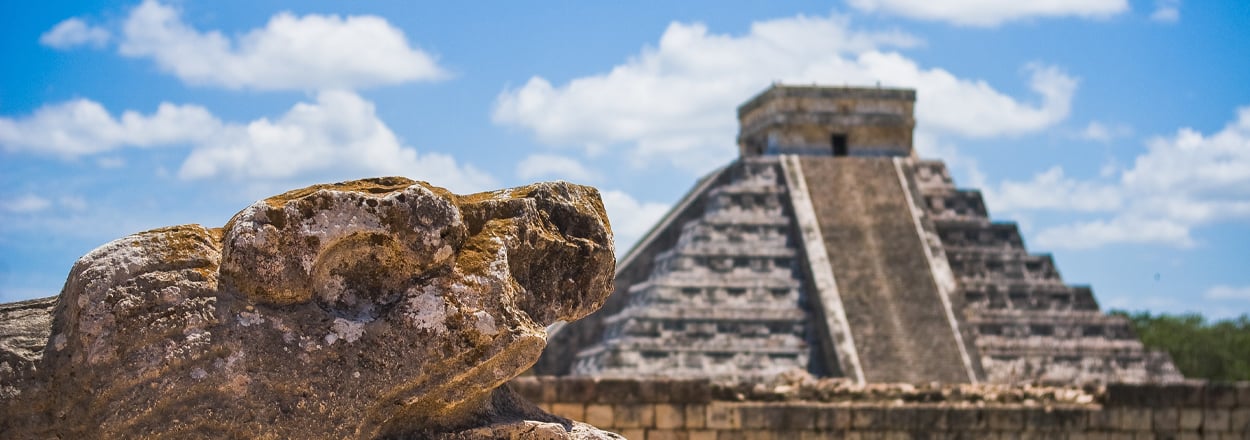Mexico definitely has many Instagram-worthy spots, but nothing compares to Mexico’s cenotes. Imagine diving into an underground pool of water that Mayans initially believed were the “gateways to the underworld.”
The word “cenote” is derived from the Yucatec Maya word “dzonot” meaning “sacred well.” Mayans considered cenotes to be vital to their survival since freshwater was readily available, and held ceremonies to communicate with the gods of the underworld.
Cenotes are exclusive to Mexico’s Yucatan Peninsula and nearby Caribbean islands, which formed millions of years ago when limestone caves collapsed. They are natural freshwater sinkholes and caverns connected to an underground river system through limestone caves and mystical passageways. Rain or shine, snorkeling, diving, swimming, cliff jumping, zip-lining or simply relaxing, spending a day in a cenote will be worth it. Dive into these five cenotes in Mexico.
Cenote Dos Ojos
Dos Ojos means “two eyes,” and this pair of cenotes located north of Tulum is the place to be. This is the deepest known cave passage in Quintana Roo and has a system of caverns through pure, turquoise water that extends nearly 40 miles long and over 350 feet deep. The Blue Eye is a world-renowned diving destination that leads to a real-live bat cave upon surfacing. The Black Eye is a challenge because it offers no visibility and requires portable lights, making it one of the most eerie and sensory depriving dives one will complete.
Gran Cenote
Don’t let the name fool you – Gran Cenote is not just one cenote. It’s split among several cenotes and caves along the jungle floor. Rather than hiking along the rocks on the way down, wooden staircases and piers make it easy to get in and out. Due to the natural light flowing in from the semi-open cave, water is so clear that you don’t need goggles to catch a glimpse of small turtles and vibrant fish swimming around. Gran Cenote is one of the most popular cenotes in between Tulum and Coba.
Ik-Kil Cenote
If you’re looking for a bold and exhilarating day-trip, plan a visit to the Ik-Kil Cenote. If you’re on your way to Chichen-Itza, one of the Seven Wonders of the World, or heading to Valladolid, you really can’t pass up a stop at Cenote Ik-Kil. Take note that this is one of the most popular cenotes to visit. A welcoming circular staircase carved out of limestone makes for an easy 85-foot journey down to swaying vines and glistening cerulean blue water. The water is roughly 130 feet deep and almost 200 feet wide, providing lots of space for extreme diving.
Cenote El Jardin del Eden
Let your inner mermaid surface as you lounge around the Garden of Eden cenote near Playa del Carmen. It’s one of the most popular places for cliff jumping near Playa del Carmen. It has an open roof that provides plenty of natural sunlight needed for the ever-growing garden filled with lush plants and flowers, surrounding the caves and in the water. Moss grows on the rocks where you can lounge and be pampered by the little fish who nibble your feet while they’re submerged in jade-colored water.
Rio Secreto Cenote
Rio Secreto Cenote in the heart of the Riviera Maya is the longest semi-open cave system in the Yucatan. Although Rio Secreto translates to “secret river” in English, this pristine natural wonder actually consists of a series of cenotes connected by an underground secret, sacred river. No need for heavy equipment or extensive dive training here. Visitors can swim freely beneath delicate stalactites and stalagmites alongside toffee- and espresso-colored rock formations. With 15 entrances and 7.5 miles of underground rivers to explore, it’s rare you’d float passed other groups, creating an intimate and peaceful experience.
Is there a cenote you think is a must-see? Tell us in the comments below!





comments